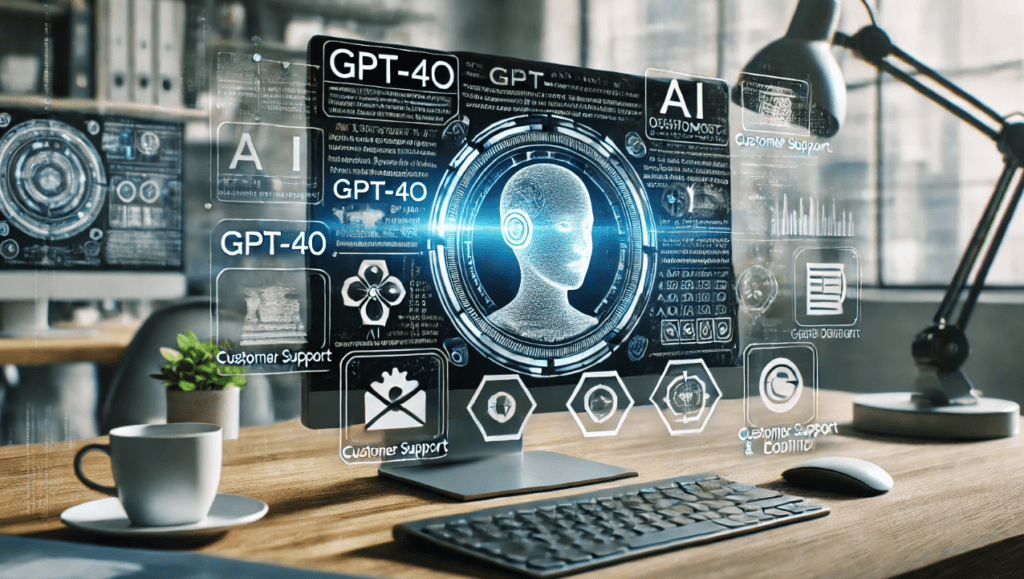ChatGPT, developed by OpenAI, stands as one of the most advanced artificial intelligence models in the world. Designed to generate humanlike text based on prompts, ChatGPT is used in numerous industries, from customer support to education. Its deep learning capabilities allow it to simulate conversation and provide insights on a wide variety of topics.
What is ChatGPT?
ChatGPT, short for Chat Generative Pre-trained Transformer, is a cutting-edge AI language model created by OpenAI. It excels at generating text that mirrors human dialogue, utilizing deep learning to engage in meaningful conversations. The model’s capabilities range from answering questions to solving problems, making it an indispensable tool for various applications, such as customer service, tutoring, and content generation.
By analyzing vast datasets of written text, ChatGPT learns language patterns, contextual meaning, and nuances, which it uses to generate coherent, contextually relevant responses. This process, called pre-training, equips the model with a comprehensive understanding of human language. Afterward, fine-tuning is applied to tailor the model to specific tasks or domains, improving accuracy and relevance for specialized applications.
One of ChatGPT’s most popular uses is in customer support, where it enhances user experience by delivering instant, accurate responses. In the education sector, ChatGPT serves as an AI tutor, providing assistance with explanations, problem-solving, and personalized learning paths.
The Evolution of GPT Versions
As with all AI models, the development of ChatGPT follows a structured versioning system. This system allows for continuous improvements in language understanding, response accuracy, and performance. The most recent version, GPT-4o, surpasses its predecessors, GPT-3, GPT-3.5, and GPT-4, by offering a more sophisticated understanding of language and context.
GPT-4o: The Latest Advancement
GPT-4o introduces several improvements, positioning it ahead of earlier models like GPT-3 and GPT-3.5. Some of the key differences include:
- Improved Language Understanding: GPT-4o excels at comprehending complex sentence structures and idiomatic expressions, resulting in more accurate responses.
- Larger and Diverse Training Data: With a broader dataset, GPT-4o delivers higher-quality text across different domains.
- Reduced Bias: GPT-4o integrates refined training techniques, ensuring more balanced and fair responses compared to earlier versions.
- Faster Performance: Optimized for efficiency, GPT-4o offers quicker response times and requires less computational power, making it ideal for real-time applications.
- Enhanced Creativity: GPT-4o has improved capabilities in generating creative content, such as stories and essays, which is valuable for writers and marketers.
Performance Benchmarks: GPT-4o vs. GPT-4 and GPT-3.5
When comparing GPT-4o to earlier versions like GPT-4 and GPT-3.5, it demonstrates superior performance in several key areas:
- Accuracy and Precision: GPT-4o boasts an accuracy rate of 89%, compared to GPT-4’s 84% and GPT-3.5’s 80%. Its precision, or ability to provide contextually relevant answers, is similarly higher.
- Perplexity: GPT-4o’s perplexity score, a measure of its ability to predict text, is 8.2, significantly lower than GPT-4’s 10.3, indicating better performance.
- Context Retention: GPT-4o retains context more effectively during multi-turn conversations, maintaining a 92% accuracy over extended dialogues.
- Response Time: The model’s average response time is 0.9 seconds, faster than GPT-4 (1.1 seconds) and GPT-3.5 (1.3 seconds).
Advancements in Creativity and Fairness
GPT-4o’s creativity index, which measures the model’s ability to generate original and diverse content, is 85 out of 100, making it more capable of producing unique content compared to GPT-4 (80) and GPT-3.5 (75). Additionally, efforts to reduce bias have been successful, with biased responses in GPT-4o reduced to 5%, compared to 8% in GPT-4 and 12% in GPT-3.5.
Popular Use Cases for GPT-4o
The versatility of GPT-4o makes it a valuable asset across industries. Some of the most common use cases include:
- Customer Support: ChatGPT streamlines customer service by handling inquiries with speed and precision, reducing wait times.
- Content Creation: Writers and marketers rely on ChatGPT for generating ideas, drafting content, and creating marketing copy.
- Language Translation: GPT-4o offers accurate translations, helping businesses operate in multiple languages.
- Coding and Development: Developers use ChatGPT to generate code snippets, assist with debugging, and solve programming challenges.
- Legal Assistance: Law firms benefit from ChatGPT’s ability to draft contracts, conduct research, and review legal documents.
How to Access GPT-4o
Users can access GPT-4o in several ways. The most direct method is through OpenAI’s ChatGPT platform, which offers both a free version (with access to earlier models) and a paid subscription (ChatGPT Plus), which provides access to GPT-4o.
For developers and businesses, API integration is available, allowing them to embed GPT-4o into their applications. Microsoft has also integrated GPT-4o into its Office Suite via “Copilot” features, enabling users to generate text and analyze data more efficiently within familiar tools like Word and Excel.
The Future of ChatGPT
As AI technology continues to evolve, future iterations of ChatGPT will focus on expanding its capabilities. OpenAI plans to improve context understanding, enabling more accurate and extended conversations. Another exciting development is the integration of multimodal capabilities, which will allow the model to process not just text but also images, audio, and video. This is expected to revolutionize industries like education, customer support, and entertainment.
Real-time learning, where the model adapts based on ongoing interactions, is another promising feature. This dynamic approach will enable more personalized responses and tailored advice. Additionally, efforts to enhance bias detection and emotional intelligence will further improve ChatGPT’s reliability and empathy, making it more suitable for sensitive applications like mental health support.
ChatGPT, and its latest version GPT-4o, represent the forefront of AI language modeling. With its enhanced language comprehension, creative abilities, and reduced bias, GPT-4o offers a vast array of practical applications across different fields. As AI technology progresses, ChatGPT will continue to adapt, improving both in terms of performance and ethical considerations, ensuring it remains a leader in conversational AI.












